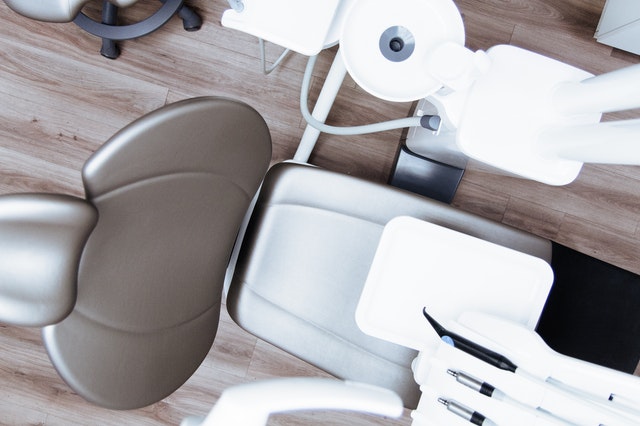Wisdom teeth, or third molars, are usually the last to erupt (come out by breaking the gums) in the oral cavity. They generally erupt between the age of 17-25. As humans evolved, wisdom teeth have become largely non-functional, precipitated by factors such as a decrease in jaw size, change in diet from uncooked to cooked meals, lack of oral care, and genetics.
Wisdom teeth often fail to erupt, or erupt partially, in adolescents and young adults – creating confusion on whether to go for wisdom tooth extraction or not. This is also a common dilemma for dentists as they need to identify if a wisdom tooth extraction is required in asymptomatic cases. Dentists also have to consider the risks, complications, and possible clinical outcomes.
Impacted wisdom teeth removal

Ideally, wisdom teeth should erupt completely, but they sometimes they erupt partially or fail to erupt at all. These are unable to come to their desired position even after the root is completely formed, and are known as impacted teeth. Wisdom teeth are the most commonly found type of impacted teeth, followed by canines. Impacted wisdom teeth may fail to erupt in the mouth due to lack of space in the dental arch, development of abnormal position, or obstruction from the adjacent tooth. An impacted wisdom tooth can be partially covered by soft tissue and bone or remain entirely embedded in the bone.
The removal of a completely erupted wisdom tooth is a simple procedure. However, the surgical procedure for impacted wisdom tooth removal is more complicated and involves making a cut in the gums and trimming the bone around the tooth.
When should a fully erupted wisdom tooth or impacted wisdom tooth be removed?
A wisdom tooth can be extracted in the following conditions:
- Pericoronitis, characterized by pain and infection around the erupting wisdom tooth due to the deposition of debris between the tooth and surrounding skin. Food debris becomes a breeding ground for bacterial activity, causing infection.
- The wisdom tooth has unrestorable decay (due to limited access to the decay site) or infection around the roots.
- Inability to maintain hygiene around the wisdom tooth.
- Periodontal diseases around wisdom tooth where maintenance is unlikely to be successful or feasible.
- Cyst or tumor around the tooth.
- Wisdom tooth’s interference with orthodontic treatment (if restricting the eruption of the adjacent tooth) or reconstructive jaw surgery.
- Wisdom tooth causing decay in the adjacent tooth or resorbing the roots of an adjacent tooth.
- Wisdom teeth posing a systemic risk (for instance, oral bacteria may enter the vital organs via the bloodstream from the mouth, causing infections).
Even in cases where the above conditions are not present, dentists prefer prophylactic (precautionary) wisdom teeth removal. In many countries, the prophylactic removal of the disease-free wisdom teeth, either impacted or fully erupted, has been considered appropriate care.
Reasons supporting the prophylactic wisdom teeth removal include:
- To prevent crowding in the lower front teeth either during or after orthodontic treatments.
- To prevent damage to the adjacent teeth or underlying vital structures (e.g. nerves) while undergoing orthognathic surgery (jaw correction surgery) or while treating trauma cases.
- To prevent potential future complications.
- To reduce the risk of future age-related complications.
The preferred age for wisdom tooth removal is during the time of root development, usually before the age of 25 years.
Retaining asymptomatic wisdom teeth may be a viable option
Wisdom teeth that are completely erupted, efficient, painless, without any decay or cyst, surrounded by healthy gums, and disease-free may not require extraction. However, this research found that ~20%-60% of wisdom teeth extractions were performed for no reason and another research discovered that around 30% of impacted teeth that were advised for removal, settled in the oral cavity by 30 years of age.
Reasons supporting the retaining of asymptomatic wisdom teeth include:
- Impacted wisdom tooth removal has potential complications such as infection, excessive bleeding, swelling, nerve injury, and restricted mouth opening. Removal of teeth can increase the likelihood of complications.
- The procedure for impacted wisdom teeth removal can be expensive.
- The presence of wisdom tooth doesn’t substantiate as the sole cause of crowding of lower front teeth. Crowding can also be caused due to other reasons such as variation in jaw length, tooth size, shape, and skeletal or soft tissue changes.

However, prophylactic removal of the wisdom tooth (completely erupted or impacted) is preferred in patients about to undergo procedures such as organ transplants, heart valve surgery, chemotherapy, radiotherapy, individuals on bisphosphonates, or individuals who may have limited access to dental services (e.g. armed forces).
Supported by the evidence-based data, the American Academy of Oral and Maxillofacial Surgery endorses that wisdom teeth associated with a disease or at high risk of developing the disease can be surgically managed. However, in the absence of symptoms or disease, removal of wisdom tooth is not advised. Instead, regular dental checkups by an expert are required to monitor the status of wisdom teeth.
As it is difficult to predict the future of impacted wisdom teeth, the patient should rely on dentists’ clinical expertise and experience in recognizing the possibility of developing a disease. Risks, complications, and clinical outcomes associated with the removal or retention of the wisdom teeth should also be considered. Another factor worth noting is the increased likelihood of complications in wisdom teeth removal as the patient ages.
About the Author
Dr. Shilpy Bhandari is an experienced dental surgeon, with a specialization in periodontics and implantology. She received her graduate and postgraduate education from Rajiv Gandhi University of Health Sciences in India. Besides clinical practice, she writes educational content for Rockwest Dental. She is also interested in evidence-based academic writing and has published several articles in international journals.
Sources
- Newadkar U. Like appendix like third molars: Vestigial organs? Medical Journal of Dr. DY Patil University. 2015 Sep 1;8(5):683-.
- Rafetto, L. K. (2004). Review of the current indications for the treatment of third molars: Based on the parameters of care. Journal of Oral and Maxillofacial Surgery, 62, 16.
- Wisdom Teeth Management. Ghaeminia H, Perry J, Nienhuijs ME, Toedtling V, Tummers M, Hoppenreijs TJ, Van der Sanden WJ, Mettes TG. Surgical removal versus retention for the management of asymptomatic disease‐free impacted wisdom teeth. Cochrane Database of Systematic Reviews. 2016(8).
- Friedman JW. The prophylactic extraction of third molars: a public health hazard. American journal of public health. 2007 Sep;97(9):1554-9.
- Renton T, Wilson NH. Problems with erupting wisdom teeth: signs, symptoms, and management. British Journal of General Practice. 2016 Aug 1;66(649):e606-8
- Song F, O’Meara S, Wilson P, Golder S, Kleijnen J. The effectiveness and cost-effectiveness of prophylactic removal of wisdom teeth. Health Technol Assess. 2000;4(15):1-55. PMID: 10932022.
- Kunkel M: removal of wisdom teeth. Dtsch Zahnärztl Z Int 2019; 1: 232–237
- Kandasamy S, Rinchuse DJ, Rinchuse DJ. The wisdom behind third molar extractions. Australian dental journal. 2009 Dec;54(4):284-92.
- Management of Third Molar Teeth. American Association of Oral and Maxillofacial Surgeons.
